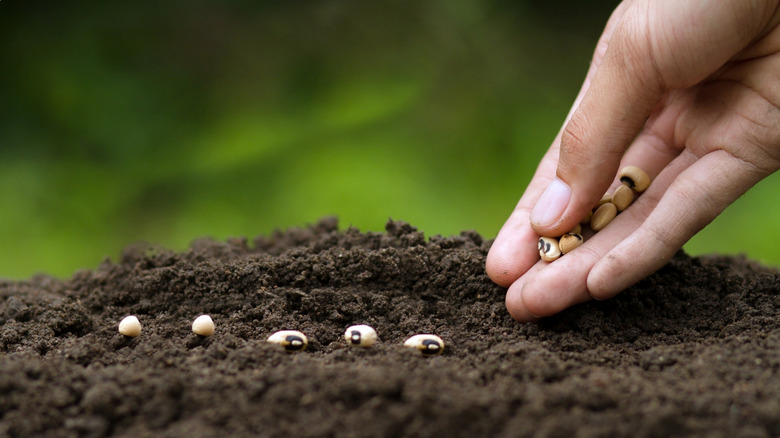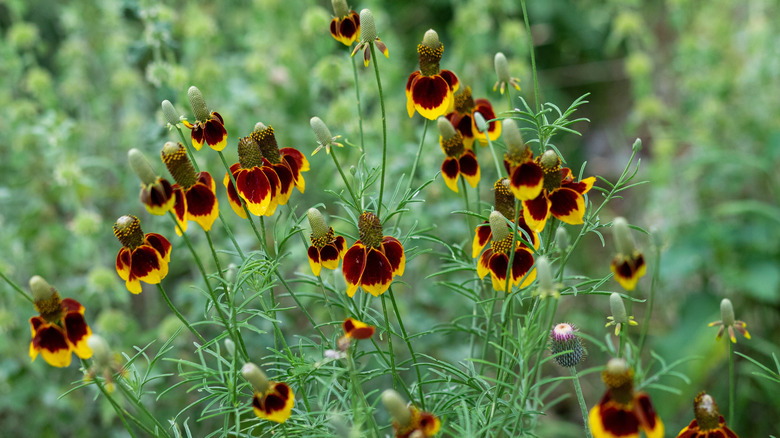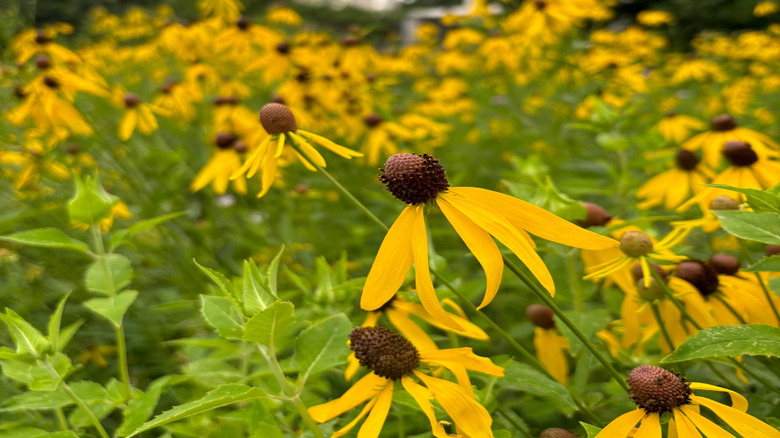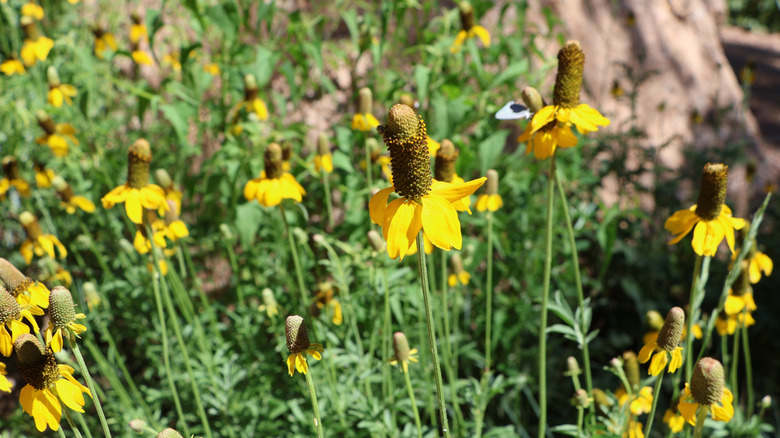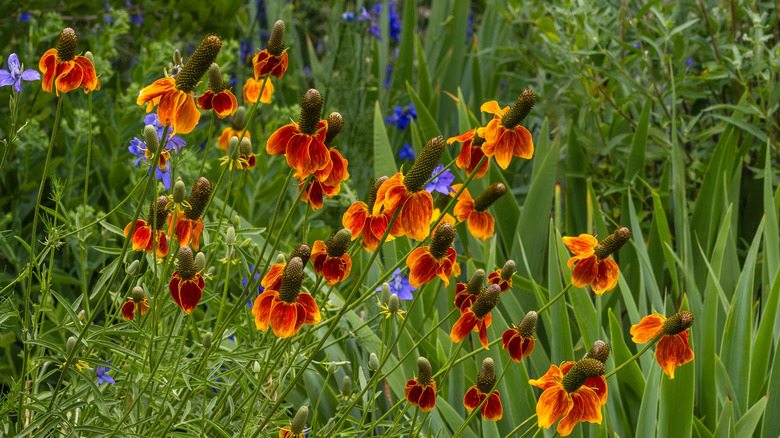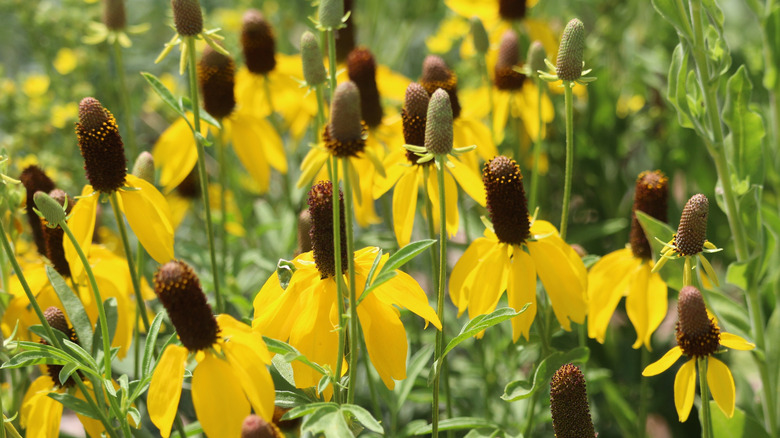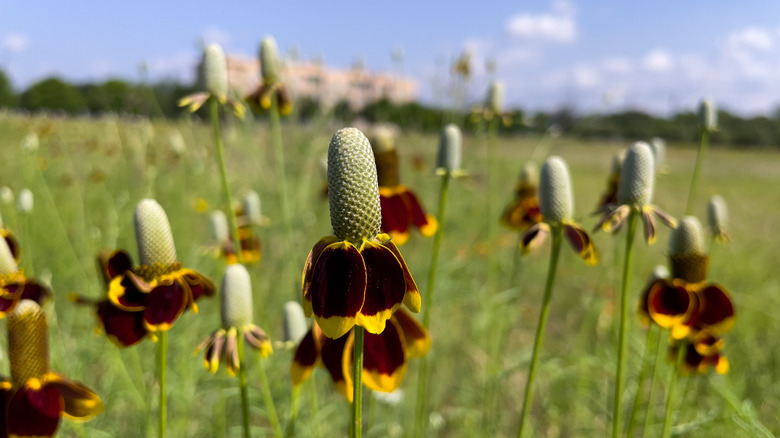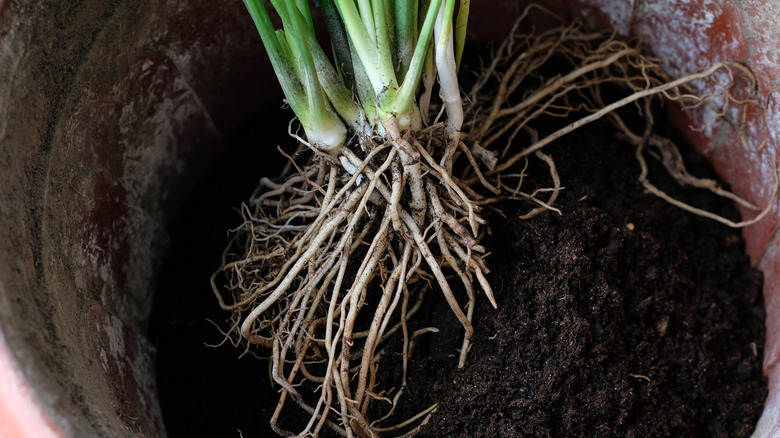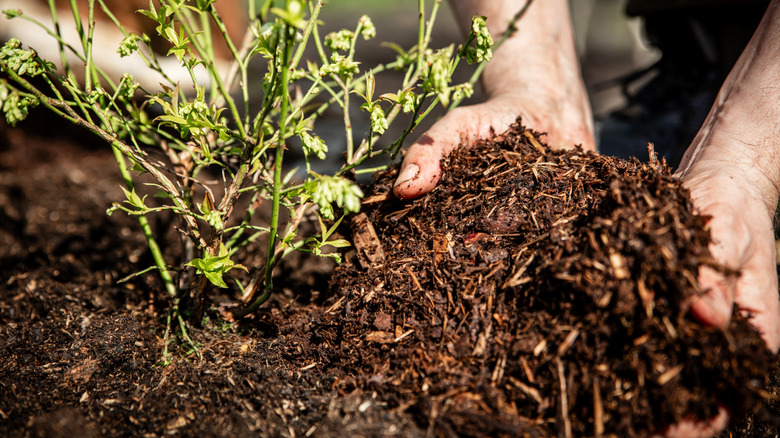How To Grow & Care For Mexican Hat Flowers For An Eye-Catching Garden
We may receive a commission on purchases made from links.
With all of the excitement around growing wildflowers and native plants we've seen lately, it's no surprise that the Mexican hat flower (Ratibida columnifera) has caught your eye. With those amazingly awesome, sombrero-like blooms that give off a mix of garnet reds and cheery yellows, a patch of Mexican hats are sure to be the centerpiece plant in your garden. Plus, they're incredibly tough, hardy wildflowers that only need a little bit of attention to do their thing, making them perfect for gardeners who want the eye candy without the effort.
So, let's break down the foundation of care your Mexican hat flowers will need for success. We'll cover the ins and outs of the plant chores you'll need to do to really make them shine, but don't worry; it's not as intense as it sounds. Still, the more you understand what's going on with your garden, the better a show your flowers will be able to give.
First, understand you may need to wait a while if you grow from seed
Yes, Mexican hats are considered fast-growing wildflowers, but they still need time to settle in when grown from seed, so it's important to set your expectations accordingly. You can give them the perfect setup, plant them at the perfect time, and give them the absolute best of everything, but even then you should expect not to see any blooms until their second year. We know that's probably not what you want to hear; who doesn't love instant gratification? Still, look at those amazing flowers — they're definitely worth the wait.
So, what should you expect that first year instead? Probably leafy growth that may not be super attractive, but is still incredibly important as your Mexican hats are getting their footing and building the strength they'll need for that year two bloom push. In the meantime, try growing some fast-growing annuals that attract pollinators to help all of your garden out, like Rocky Mountain bee plant (Cleome serrulata). Annuals will help fill out the garden space while your Mexican hats are germinating and won't compete with them for space next year when they're ready to burst out those awesome flowers.
Sow seeds in the spring or fall to give them the best chance to thrive
So, now that you've planned your long-term strategy for your Mexican hats, let's talk about getting those seeds started the right way. Ratibida columnifera is a native wildflower to the U.S., so can handle rough weather patterns without much fuss. Consequently, they should be planted in the early spring or in fall, so that they get a period of cold stratification that will help break down their hard seed coat and make them ready to germinate once the growing season starts.
If you're planting your R. columnifera seeds during the spring, start them in a pot that has a good seed starting soil mix, like Coast of Maine's Sprout Island Organic Seed Starter blend, which is one of our favorites. Seed starting mixes have more goodies that promote germination, such as worm castings and mycorrhizae, so they're worth getting instead of your standard potting or garden soil blend. Put the pot in a cold frame (learn morea about cold frame gardening here) that's somewhere sunny, so that your seeds are protected from wind but still get a good dose of sun. Mexican hats take about two days to germinate, but give it a week or so before you start checking for sprouts. Once they've germinated, transplant them into the soil.
If you're planting your seeds in the fall, it's best to put them directly into the ground and cover with soil. Make sure the area has good sun coverage, as R. columnifera needs full sun to thrive. You probably won't see them germinate before the first frost, but that's okay; they're doing their thing underground and should pop up in the spring.
Plant them in well-draining, neutral soil
One of the reasons gardeners love to add Mexican hat flowers to their gardens is that they're not picky about their soil, and prefers neutral, or "circumneutral," pH levels. They're also able to handle a lot of soil types, including poor soil. But if you really want your Mexican hats to thrive, you should plant them somewhere that has well-draining, loamy conditions and is as close to a neutral pH as you can get.
If you plant them in soil that's too compacted, the delicate roots won't be able to get the oxygen they need and may succumb to rot from consistently moist conditions. Meanwhile, planting them in soil that's too acidic can prevent your R. columnifera plant from getting the nutrients it needs and potentially expose it to toxins that stunt growth. On the other hand, a pH that's too alkaline also makes it hard for your Mexican hat to get the nutrients it needs, so you've got to meet in the middle. Get a soil test before you plant your seeds and start amending the soil with things that can increase its drainage. If your test results come back with a pH level that would make it hard for Mexican hats to thrive, there are other colorful plants that thrive in acidic soil or you can always make your garden soil more acidic if it's too alkaline.
Plan your garden layout for their mature size
One of the biggest mistakes we see gardeners make is squishing all of their wildflowers together, which can cause way more problems than you think. We get it; that first year's sparse look isn't your aesthetic goal, but Mexican hat flowers grow fast and can get big, so you've got to give them the space they need. A mature Mexican hat flower plant can grow up to 3 feet tall with a 1 foot spread, which is a lot of space in a small garden, so you'll need to plan accordingly.
Your best bet is to first plan for them to live in the back of your garden so that their canopy doesn't literally overshadow smaller plants. After that, you really do need to give them that full 1 foot of space to spread, because R. columnifera isn't playing any games. Since they're such fast growers and can get so big, they're known to become aggressive, if necessary, to get the nutrients they need, which can be a problem for slower growing or more wilting bloom-type diva plants.
Be prepared for a LOT of Mexican hats
R. columniferas are prolific bloomers and can sometimes produce — no joke — thousands of blooms in one season if the conditions are right. It's due to their growth pattern; Mexican hat plants can grow one, or several, stems per plant, and each stem has one job: flower production. So, if you make them happy, you could be overwhelmed with Mexican hats, which might sound like a good problem to have. Your other garden plants, however, may think otherwise.
If you want to hedge your bets there are a few ways you can prevent your Mexican hats from spreading, stopping the ridiculous amount of blooms. Your attack strategy should focus on reducing seed production. Mowing over them may be a good option, since it won't kill them, but rather just cut them back. However, you could also accidentally send lots of seeds into the ground. An even better option is to reduce their access to sunlight, which can slow seed production, giving you time to harvest the seeds before they fall. A thicker shade cloth can help, or you can plant taller plants around them to block full sun from hitting their flowers.
Make sure they have at least 6 hours of sunlight per day
If space isn't an issue and you just want happy Mexican hats, you'll need to give them full sun conditions. You'll often find Mexican hats thriving in open fields and prairies, because those spots have very few obstacles that prevent tall plants from getting the light they need. In your garden, they should be planted somewhere that gets at least six hours of direct sunlight per day during their growing season to promote photosynthesis and give them the best chance at thriving.
To ensure your Mexican hats are soaking up enough rays, choose a south or west-facing spot in your garden, if possible. These locations typically provide the most intense, prolonged sunlight throughout the day. If your plants aren't getting enough sun, you might notice them looking leggy or stretched out as they reach for light, and their blooming might be sporadic or even non-existent and have a dull color. Remember, a little extra sunshine for these prairie beauties goes a long way in ensuring an eye-catching display.
Water them regularly in their first season to help them become drought-resistant and keep their blooms going
People love planting Mexican hats because they're considered drought-resistant and can handle the occasional week or so you go on vacation. But their first year is crucial, as they're getting their bearings and setting down the roots they need to thrive. So, give them a little extra care their first season and water them regularly.
As a bonus, more watering will typically result in a longer flowering season for R. columnifera plants, so it's a win-win. You'll begin to notice your Mexican hats need a little drink when your plants begin to wilt or look droopy. If you're growing them from seeds and don't have flowers their first year, get a moisture meter. This Oxliracc 3-in-1 Soil Moisture/Light/pH Tester can track both moisture and light levels (plus pH!), and is a pretty cheap investment for keeping your garden healthy. Give them enough water so that the first inch of garden soil is moist. This will ensure your Mexican hat's roots get the moisture they need, but aren't waterlogged.
Grow them outdoors only in USDA Zones 4-9
Ratibida columnifera is native to a huge swath of the U.S. and Canada, so they can handle most USDA Hardiness Zones, but are recommended for Zones 4 through 9. However, climate change can shift things around, so what might've once been an okay spot could now be too intense for them to handle. On the other hand, what was previously considered too cold may now be warm enough for Mexican hats to grow.
If you live outside Zones 4 to 9, or live on the edges of the recommended areas, you may want to skip the in-ground option and grow them in pots. That way, you can bring your Mexican hats inside when the winter hits or move them to a better spot if the soil becomes too dry from the harsh summer sun. You may just need to pot them up more often than other container plants, since they're such fast growers.
Don't plant them next to more delicate flowers, as they may outcompete them for nutrients
One thing that's awesome about growing native wildflowers is that they're already in-tune with our landscape, so they don't have the same issues adjusting that a more non-native species might have. However, there's a flip side to this: Mexican hats are built tough and, consequently, can become garden bullies that outcompete more delicate plants for resources. If you don't plan their growing area strategically, you may end up battling them to save your more dainty plants from getting pushed out.
Now, that doesn't mean you'll need to nix your more delicate flowers off your planting list; it just means you need to be a little more thoughtful about what plant goes where. First, map out your garden with the right measurements — you can use a planting app or even graph paper and a pencil. Give your Mexican hats a wide berth — 1 foot per plant — and put them toward the back of the gardenscape. You can then put a row of medium-sized hardy wildflowers in the middle, like columbines (Aquilegia), ardy geraniums, wild lupine (Lupinus perennis), or sundrops (Oenothera fruticosa). Then, put your higher maintenance plants up front. This will ensure everyone stays in their lane and that your weaker plants don't get bullied out.
Deadhead spent flowers to encourage more Mexican hats
If you want that prairie full of wildflowers look and are excited by the potential thousands of blooms Mexican hats can produce, then you can add deadheading to your plant chore list. Deadheading a spent Mexican hat bloom will force the plant to send up another flower in its place, with the hope it may attract one more pollinator or produce one more batch of seeds. This means you'll get a longer bloom season full of gorgeous Mexican hats.
Deadheading R. columnifera can be as easy as snipping things off right under the flower. However, if you want to get strategic about it, it's better to instead lop off anything above the highest twig joint or node. You'll notice a node, as it looks like a kink in the stem and is where leaves or offshoots typically grow. These spots are goldmines for producing more flowers or stems, as they have all the information the plant needs for sending up shoots.
Make more Mexican hat flowers by dividing plants
While Mexican hat flowers are excellent self-seeders, you don't have to wait for them to drop their seeds in order to get more plants. Ratibida columnifera is a type of plant that will create multiple stems that can be easily divided. Division is better than waiting for seeds anyhow, since the plants are already matured, so you won't need to wait that long two-year period. Plus, the plant will be able to stretch out now that it has fewer stems to care for.
If you've ever divided a peace lily or hosta, then you already know how to divide perennials, so this will be easy. For those new to propagation by division, start by removing the whole plant from the ground or pot and dust off as much soil as you can, so you can see the full root system. Look for a stem that has roots attached to it and already looks like a standalone plant that just happened to tangle its roots with others. You can then either try to gently pull them apart with your hands, or use a garden saw (we love Nikasu's Original Japanese Hori-Hori Knife) to saw through the root ball and fully separate the divisions. After that, pop the mother plant in its old spot and the offshoot in a new place that's at least 1 foot away, so everyone has room to grow. Water them thoroughly and let them do their thing.
Mulch around the plant's base before winter to insulate their roots
Mexican hat flowers can do well on their own, but if you want to give them the best shot possible, mulching around the plant is a good idea. Not only can it help suppress weeds that might try to compete with a fledging R. columnifera as its trying to settle in, but it's especially helpful in areas that can have temperature fluctuations. Mexican hat flowers germinate best when temperatures are between 68 degrees Fahrenheit and 86 degrees Fahrenheit, and mulch can help regulate the soil's temperature to prevent any sudden changes that might shock the plant or mess with germination.
Mulching around a Mexican hat can also help during the winter, insulating the roots like a little cozy blanket. While it's a hardy plant, R. columnifera roots can suffer from cold damage or even get pushed up and out of the soil by frost, making it harder for the plant to come back in the spring. Luckily, mulching is easy — just lay 2 to 4 inches of your preferred mulch around the plants base right after the first frost, but before the ground completely freezes. You can then remove it in the early spring, right before its growing season starts, so that new stems can shoot up easily.


